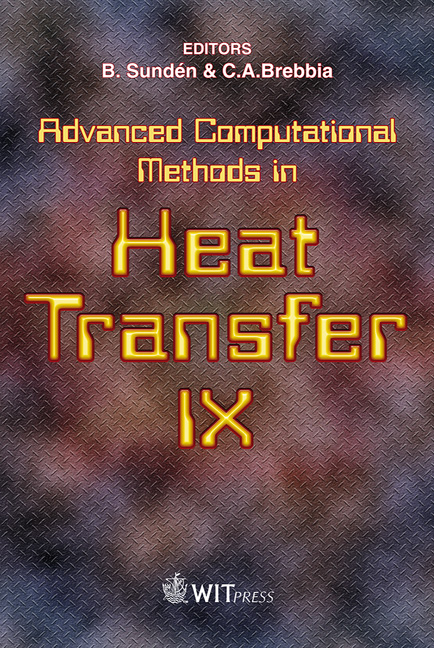Temperature Identification Based On Pointwise Transient Measurements
Price
Free (open access)
Transaction
Volume
53
Pages
10
Published
2006
Size
605 kb
Paper DOI
10.2495/HT060131
Copyright
WIT Press
Author(s)
A. Nassiopoulos & F. Bourquin
Abstract
The inverse problem of temperature identification based on discrete transient measurements is considered. An iterative procedure combining the conjugate gradient algorithm with Tikhonov regularization is used to determine unknown boundary heat fluxes. We show numerically and theoretically that the choice of an H1-type space for the minimization gives much better results than a L2-type one. A dual formulation of the problem coupled with a model reduction method is used to construct a fast and accurate algorithm suited for real time computations in the three-dimensional case. Keywords: temperature reconstruction, inverse heat conduction, optimal control theory, adjoint method. 1 Introduction Various methods for damage detection and structural health monitoring exist. Among them, the output-only techniques consist in identifying the low frequency spectrum of a given structure in order to detect modifications with respect to the non-damaged reference state. However, in civil engineering, thermal loading due to environmental factors induces mechanical stress on structures and can cause eigenfrequency shifts of much larger order of magnitude than those caused by structural damage [1]. Thus, the knowledge of the exact thermal state of a given structure and its effects on vibrational properties appears as a bottleneck in this field [2]. The need for temperature identification arises from the partial information on the thermal state of a structure one can get. The most commonly used temperature sensors can only provide local or pointwise measurements. In addition, some parts of a structure can simply be inaccessible to direct measurements. This is the case
Keywords
temperature reconstruction, inverse heat conduction, optimal control theory, adjoint method.





